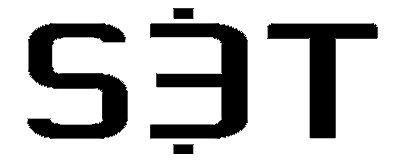Know Talent + Go Talent

Ever heard someone say "Ok but what's the problem we're trying to solve?" Did you ever feel like it was being used as a stall tactic? There are 2 sides to this...
It's true, taking even a few minutes to check and align on what the problem is can make a huge difference in the eventual outcome.
Most of the time our initial understanding of the problem is deficient. But HOW do you get that more sufficient understanding of the problem?
- Do you need more analysis? (due diligence can save you trial and error)
- Or do you need to just make an initial attempt? (because initial attempts can give you a better understanding of a problem).
That's the dilemma.
Most of today's problems are complex, interconnected, often tied to other issues.
To be successful every team needs 2 kinds of talent.
Fortunately, in almost every scenario you'll face, these 2 kinds of talent are already present.
Unfortunately, you probably will not recognize them. You will probably look at this perfect mix of 2 kinds of talent, and not see it for what it is. You may instead see it as a hopelessly conflicted group. A lack of unity. A headache.
SO, let's talk about how to:
- recognize these two kinds of talent,
- understand and unleash their value, and
- make them feel valued and empowered.
Because as a change leader, you are focused on helping teams created success stories that every member of the team will feel proud of. And doing so while honoring the diverse experiences, backgrounds and talents that each team member brings.
The 2 Kinds of Talent
- Those who want to KNOW
- Those who want to GO
You'll recognize them by how they talk and behave:
- Those who want to KNOW: they want to know more before proceeding. They're often the ones asking "What's the problem we're trying to solve?" or "Have we talked with (another stakeholder or partner) yet?"
- Those who want to GO: Probably already started because in their mind it's way overdue, they were hoping to have done this last year, the competition is already doing it, etc. They can't understand why everyone isn't on board already.
These 2 groups are different, but also have more in common than you'd think.

Those who want to KNOW
Their Likes & Dislikes
- Like to know more about the problem
- Like to know things will be done correctly
- Do NOT like wasting time going in the wrong direction, or jumping the gun early with half-baked ideas (and feeling foolish as a result).
- Do NOT like losing control or having a bad outcome. They tend to be highly aware of the expectations of their stakeholders and customers, and do NOT want to disappoint them.
Their Trusts & Distrusts
- They trust subject matter expertise and previous experience.
- They distrust unfamiliar unproven approaches, and are quick to see their shortcomings or potential glitches.
Why you should value them and make sure they feel valued
- They can help you avoid careless mistakes and irrational exuberance.
- They can help plan careful transitions, and ensure continuity of critical obligations like compliance, data protection, and security.

Those who want to GO
Their Likes & Dislikes
- They also like to know more about the problem
- They also like to do things correctly (and often, do things better)
- They do NOT like to waste time in analysis that sounds legit on a PowerPoint slide but may fail in the field, or in its first brush with reality.
- They like to get to first-hand real-world usage as soon as possible. They like to start the customer feedback loop as soon as possible. In their minds, this is when real learning starts.
- They do NOT like delay. They tend to be more aware of the passing of time and the risk of missing key opportunities.
Their Trust & Distrusts
- They trust first-hand experimentation and iteration more than subject matter expertise. They probably learned this the hard way in a rapidly changing industry where expertise had a short shelf life.
- They distrust established norms and are quick to see the shortcomings of the status quo.
Why you should value them and make sure they feel valued
- They are rapid and continuous learners
- They are comfortable with ambiguity and will help find or create a way forward.
- They can help you avoid inertia and lost opportunity
Going the Distance and Getting To the Goal
The great thing is, when you get these 2 talent groups working together as 1 team, nothing can stop you. No amount of complexity or challenges can prevent you from overcoming the challenges and getting to your planned outcome.
Make sure every person on the team knows this.
The key for you is to recognize the value of each group, make sure they feel valued, and model the behavior of respecting different forms of talent - even when its different from your own.

